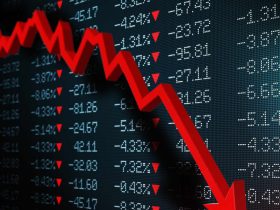Articles
Ahead of the Herd
Oct. 13: Last week the yellow metal skidded to a seven-year low, with World Gold Council analysts noting that September was the fourth consecutive month of outflows from gold ETFs. Gold’s performance this year has been flat—the gains between March and May canceled out by the losses from May to October. Headwinds have included receding fears of a U.S. slowdown, surging bond yields, and better-performing equities.
On Oct. 4, gold came within 10 bucks of a 2023 low of $1,811.20. Then came news of the attack on Israel by Hamas, a Sunni Islamist organization that governs the Gaza Strip of the Palestinian territories. Gold immediately reacted, climbing from $1,837 on Oct. 8, the day of the invasion, to $1,874 on Oct. 11, a bump of $37. While a 2% increase isn’t enough to stir excitement among gold bugs, it’s the threat of the conflict escalating, along with macroeconomic factors, that will be the catalyst for the next sustained upturn in the gold price.
Richard (Rick) Mills
Fed’s Tacit Rate Target: 6.5%
US Watch – Quick Insights
TS Lombard
Oct. 13: September CPI data don’t support the Fed’s narrative that disinflation will march on, albeit in fits and starts, even if the economy keeps growing and unemployment stays low. The nascent upturn in the economy that began in late Q2 is beginning to reverse disinflation, as well. This was evident in some PPI series and inside the September CPI report, as well. Assuming the economy keeps growing, and most signs point in this direction near term, the Fed will get back to hiking, with 6.5% as the tacit target. Whether the economy holds up until they get there is a different story for a different day.
Steven Blitz
Echoes of the 1987
U.S. Focus – Equities
NDR Ned Davis Research
Oct. 12: The cap-weighted averages have posted strong gains year to date, but underlying market breadth has been weak. Inflation fears have pushed interest rates higher, prompting concerns over more rate hikes. Rate-sensitive sectors have underperformed. More recently, the dollar has strengthened, potentially hindering an earnings recovery. Heading into October, the S&P 500 pulled back nearly 8% from its summer high.
The above paragraph summarizes 2023. It also describes 1987. While the similarities are glaring, however, a closer examination reveals several deviations. In 1987, the market was more overbought, the October decline before the crash was far more pronounced, interest rates were higher, economic growth and inflation were accelerating, and cyclical sectors were stronger.
Two key market structures distinguish 1987 from 2023. Portfolio insurance was the foolproof way to protect against losses, until it became ubiquitous and exacerbated the selling. And, in the aftermath of the crash, circuit breakers were installed to make a 20% decline in a single day like on Oct. 19, 1987, almost impossible.
While there are several high-level similarities, not enough line up to conclude that a crash-like event is likely. More important, most of our models haven’t deteriorated enough to support the case.
Ed Clissold, Thanh Nguyen
Sizing Up the Banks
Market Commentary
Cumberland Advisors
Oct. 11: Since March, Moody’s and S&P have downgraded numerous banks in response to the banking crisis and the weaknesses it exposed. In August, there was another round of rating actions. In early August, Moody’s took negative action on 27 banks, downgrading 10, placing six under review negative, and changing the outlook to negative on 11. Later in August, S&P downgraded five banks, with several others assigned negative outlooks. In mid-August, Fitch also released a comment on U.S. banks. We expect bank ratings will continue to be pressured, given the environment and the number of banks currently with negative outlooks or under review.
The American Bankers Association took issue with the rating-agency assessments in a strongly worded release on its website. The association noted that lending rates are rising, so margins shouldn’t be squeezed as much as assumed by the agencies, and that floating-rate loans and refinancing maturities have somewhat buffered net interest margin. Capital ratios are higher than required by regulators, and real estate portfolios are highly diversified. Many banks have indicated that the commercial real estate may be in more resilient subcomponents of office space, such as medical space, suburban office buildings, and newer class A properties.
Despite the rosier outlook from the bank trade association, not all is rosy for lower-rated banks with less diversified lending portfolios and large holdings of longer-dated investments, especially considering a potential economic slowdown and the refinancing needs of commercial real estate, as well as regulatory changes.
Patricia Healy
Small Stocks, Big Dividends
Blog
The Prudent Speculator
Oct. 6: Larger companies tend to be given credit for their business’ maturity, allowing them to build up balance-sheet cash and pay dividends. Smaller companies aren’t knocked for their dividend payment programs or strong balance sheets, but investors often jump to conclusions about corporate stability by looking at company size. We crunched numbers for nearly 2,500 dividend-paying companies between 2009 and 2022 and found that dividend hikes in Small-Cap and Micro-Cap stocks outpaced Large-Cap and Giant-Cap hikes by approximately a factor of two.
The theme carries over to the broad index level. The yield for Small-Caps is 2.9% (Russell 2000 index), 0.9% higher than that of Large-Caps (Russell 1000 index). The broad indexes don’t target dividend-payers specifically. As of Sept. 30, 67% of Large-Cap constituents and 39% of Small-Cap constituents paid a dividend over the past year.
John Buckingham, Jason R. Clark, and team
To be considered for this section, material, with the author’s name and address, should be sent to MarketWatch@barrons.com.
Read the full article here









Leave a Reply